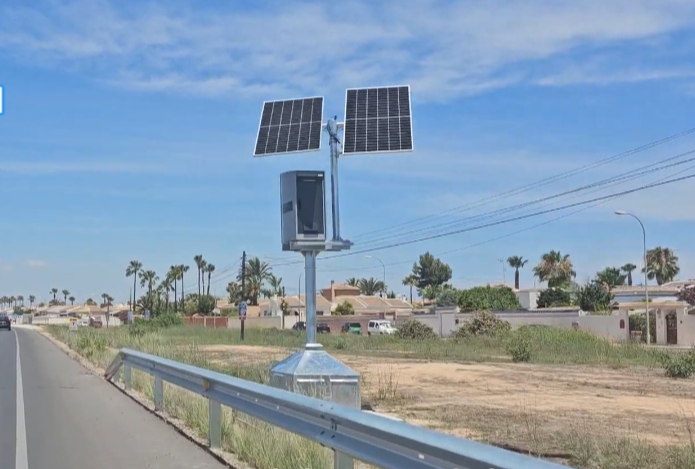The General Directorate of Traffic (DGT) is finalising the installation of six new radars in the province of Alicante. The installation of new fixed speed cameras on roadways is now well underway, with civil engineering work substantially done. These gadgets are projected to become operational between the end of 2025 and the beginning of 2026.
One device is positioned on the A-7 near Elche, another on the N-340, which also passes through Elche, two more on the A-31 in Novelda and Elda, another on the CV-70 between Benidorm and La Nucia, and the sixth on the CV-920 in Rojales.
The booths are now complete, and the Provincial Traffic Department anticipates the new radars to be placed this month. The Spanish Metrology Centre (CEM) must still configure and certify them before they may be commissioned, as announced by the DGT.
The Traffic Department has also reminded everyone that “the reasons for their activation are always a matter of road safety.”
Juan Antonio Nieves, Deputy Government Delegate in Alicante, stated that “with the upcoming implementation of six new fixed speed cameras on Alicante roads, the Government is taking another step forward in the modernisation of traffic infrastructure, placing our province at the forefront of speed control and road safety.”
Four new radars in 2025
The DGT introduced four new radars in the province of Alicante at the beginning of 2025: on the N-332 at Santa Pola (kilometre point 89), on the CV-96 near Elche (kilometre 13.8), on the CV-905 near Torrevieja (kilometre 7), and on the A-77a in San Vicente del Raspeig (kilometre point 0.4).
More precise controls
Since this summer, DGT radars have had narrower margins of error, allowing them to “jump” earlier. Until a few months ago, regulations 5 and 7 applied. In the first scenario, on roads up to 100 km/h, the margin was 5 km/h, and on those exceeding 100 km/h, it was 7. This also applies to fixed-speed cameras.
And the same is true for mobile phones, however in this situation with 7. That example, it increases to 57 km/h in the city but only to 7% of 120 on the highway. That is, 128 km per hour.
However, the margins have been closing for weeks due to the enhanced precision of the latest generation of radars, and they will thus jump to lower speeds.
The rule of five becomes the rule of three. That is, on 30 km/h highways, the speed limit will be 33 km/h, on 50 km/h roads, 53 km/h, and so on for fixed radar. The rule of 5 applies to mobile radars, thus they will go at 55 km/h, or 5% of the speed limit on dual carriageways and highways.









No Comment! Be the first one.